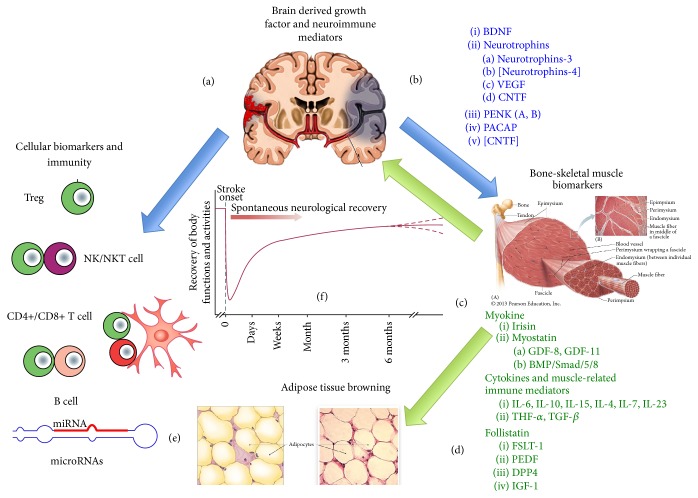Figure 1.
Cartoon showing the relationship between brain, muscle, and the immune system during stroke onset and stroke recovery, in order to highlight possible biomarkers of these events, as described in the text. Damaged brain, either following ischemic or hemorrhagic stroke, produces a panoply of different biomolecules, mainly BDNF or other neuromodulators, which link brain function with the immune system (a) and skeletal muscle (b). The first releases cytokines and cellular markers and the second one myokines, many of which interact with BDNF (c). Many of these myokines modulate the activity of other tissues such as vascular tissue (endothelia), bone, and adipose tissue. Irisin is a known “browning stimulator” (d). Downstream regulators of these mechanisms are represented by newly discovered miRNAs (e). The relationship between the activity of a defined biomarker (dose/time in plasma) and stroke recovery can be plotted in a time course curve as exemplified in (f).

